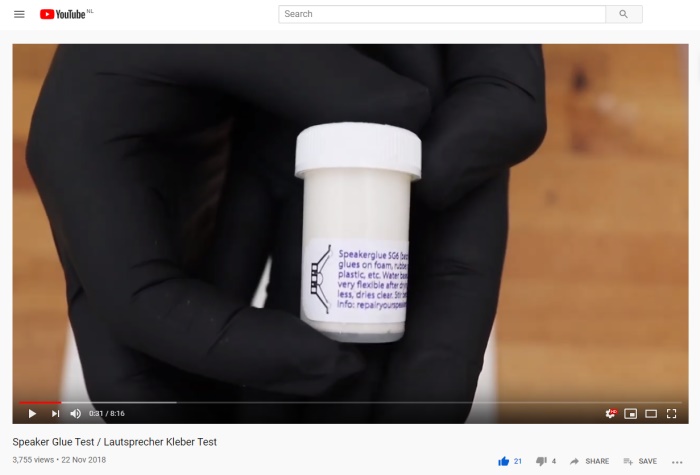Glue / Brush / Fluid
Glue > General.
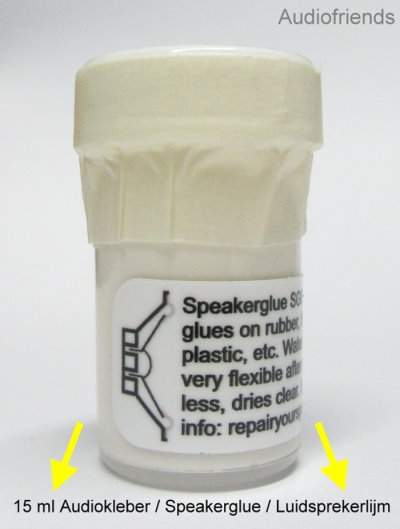
> Stir the glue well before use. <

> The glue is liquid white but dries up clear. <
The glue is no wood glue, which dries very hard, and no hobby glue. Our adhesive can look the same, but you can check the purchase by buying the 3 adhesives and allow them to dry together. Our glue is the most powerful and most flexible. It sticks on foam, rubber, metal an plastic. Note please, that the glue need to dry a bit before monting. So that about 1/3 of the adhesive surface is still white and 2/3 is transparent. (See please our manuals.)
Glue > The shelf life of the glue?
The shelf life of the glue depends on various conditions. If the glue bottle is stored unopened at room temperature (20 degrees Celsius), the glue has a shelf life of up to 6 months - 1 year.
Glue > Drying time?
The drying time depends on, among other things, the temperature at which you process the glue. Processing at 18 degrees Celsius gives a slow drying of the glue, processing under 35 degrees Celsius gives a quick drying of the glue. Furthermore, the drying time depends on how thick you apply the adhesive layers. A thick layer dries slower than a thin layer.
The drying time also depends on which materials are used. You can imagine that porous foam on a paper cone dries faster than rubber material on a plastic cone. The method of how the surround is mounted is also important for the drying time. For example, it may be that when drying with the surround behind the cone, where the glue is often applied in liquid form, the drying time is longer. After 24 hours the glue is usually the strongest. The glue can remain a little sticky on the surface when used excessively. Therefore, do not use this glue as a coating.
PLEASE NOTE: Our Speaker Glue SG6 is not a double component adhesive. Applying the SG6 glue completely liquid between two airtight surfaces (for example between a rubber surround and a Kevlar cone) is not recommended, especially with a thick layer of glue between wide and large surfaces. You should then allow the adhesive to dry slightly on the surfaces until one third to one half of the SG6 adhesive is colorless.
Glue > When is the glue at its strongest?
At room temperature (20 degrees Celsius), the adhesive is strongest after approx 24 hours. Please note: the strength of the glue depends on the use of the glue. The glue should dry a little before mounting the surround on the cone or on the frame. The duration in time of this drying-in depends on the temperature, thickness of the layer, the material of the cone, etc. The applied glue should be approximately 1/3 to 1/2 part transparent. Preferably press firmly. If the glue is used entirely in liquid form, this is possible under certain circumstances.
The drying time becomes longer as less air can reach the glue. Especially in the fairly exceptional case of mounting a rubber surround on a plastic or other hard material other than paper. This is therefore not recommended in most cases, especially with a wide layer of glue.
Glue > How much do you need?
Audiofriends uses per 2 x 10 inch one bottle of 15 ml glue. However if you have gaskets on you speaker, you can also can mount these ones with our glue. You need then some more glue. To be sure you have enough glue, and don't have an unplesant surprise we handel approximately:
- Till 2 x 8 inch = 1 x 15 ml
- 2 x 10 inch = 1 or 2 x 15 ml
- 2 x 12 inch = 2 x 15 ml
- 2 x 15 inch = 3 x 15 ml
- 4 x 4 inch = 1 or 2 x 15 ml.
- 8 x 3,5 inch = 1 or 2 x 15 ml
Glue > Other information?
You want to know more about the type of glue we use
.
The glue is a part of the revision. For instance, if you use Bisontix or Bisonkit, you run the risk of the glue affecting the foam immediately or at a later stage. More importantly, not all glues have the properties this special glue has. The special glue resembles wood glue, but it is markedly different.
Both are water-based glues, but wood glue becomes a lot harder and shrinks a lot more.
Both characteristics make wood glue unsuitable for this purpose. The glue needs to follow the movements of the foam. Glue that is too hard will come off. If the glue shrinks too much on the joints between, for instance, cone and foam, it will pull the foam towards it.
The glue we provide is also very strong, a lot stronger than the form itself and it is a water-based glue. This glue is especially made for hanging surround rims, dust caps, etc. and it is used by virtually all professional refoaming companies.
Audiofriends has conducted extensive tests with various types of glue on difficult surfaces.
Naturally, we also tested the glue on loudspeaker units. In this case, a unit of the most sold speaker in the world, the Bose 301
.
Depending on the circumstances, it takes approximately 30 minutes for the glue to become strong enough to be handled safely.
After about 24 hours, the glue is so strong that the foam rips apart in case of heavy-handed removal. The glue will not come off. After extensive tests, glue B was chosen from a selection of four different glues.
The following has been taken into consideration (among other things):
1. Process ability
2. Force on various materials after 30 minutes of drying
3. Force on various materials after 24 hours of drying
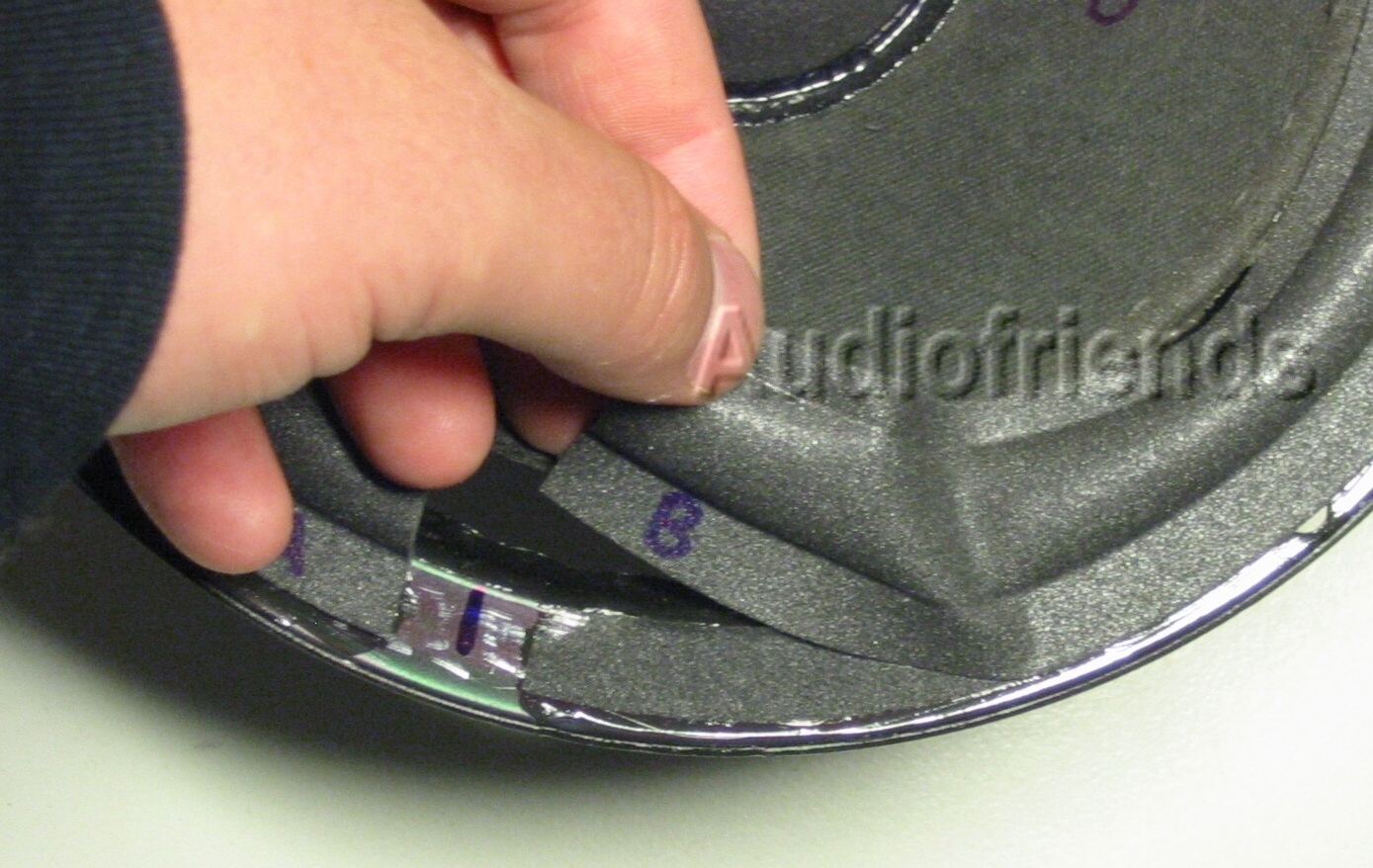
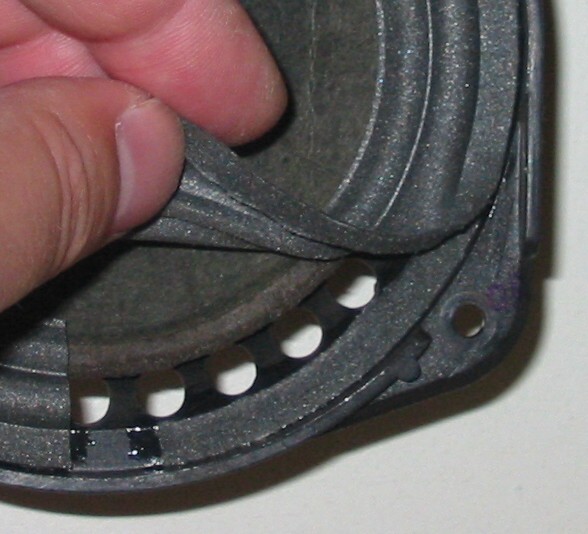
The glue we use at Audiofriends also adheres very well to plastic. In this case too, the glue is actually stronger than the foam itself.
Glue > Has the glue been tested by independent others?
Our glue has therefore received an excellent independent rating on YouTube. Click for the complete test this hyperlink:
Glue > Diluting the Audiofriends SG6 glue.
You can, at a warm outside temperature, or a larger surround that needs to be glued, thin the glue slightly. The dilution of our glue (Speaker Glue type 6 (SG6) is done with only one full drop of tap water per 15 ml bottle.
How do you adjust a full drop of tap water?
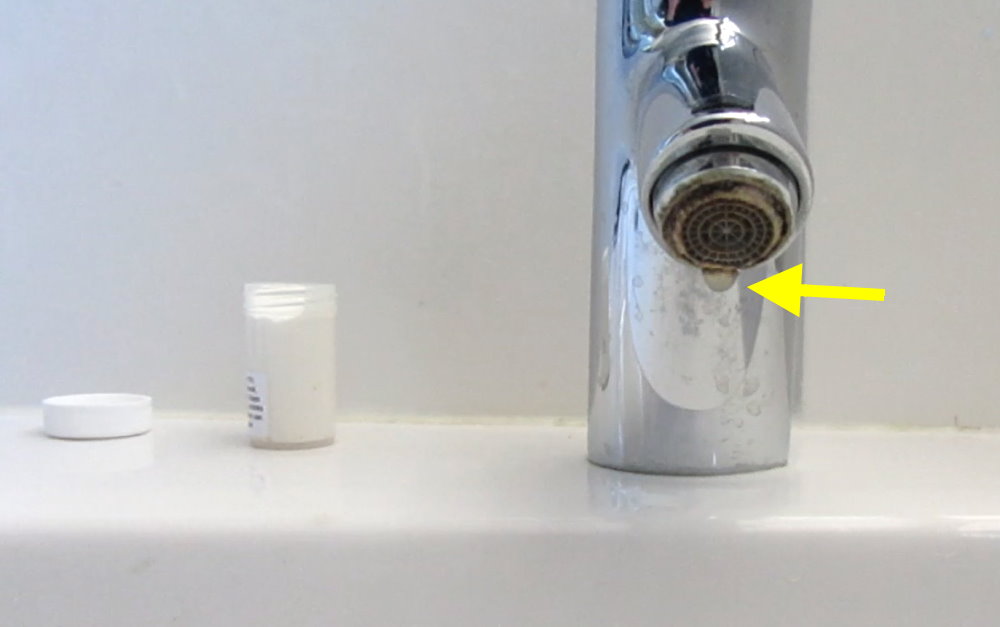
Unscrew the lid of the glue bottle and place the bottle next to the water tap.

Open the tap until the water comes out gently in drops. About one drop per second, slower is fine too.

Collect exactly one full drop from the tap in the open glue bottle.
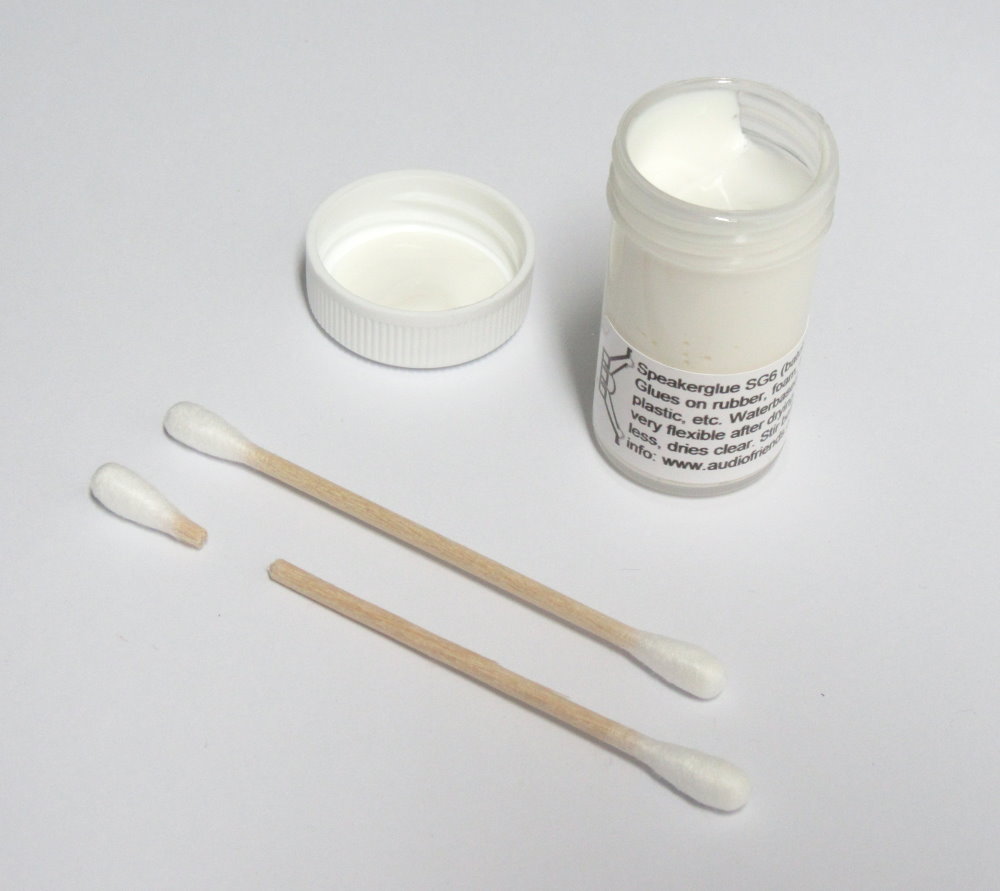
Take something with which you can mix the drop of water with the glue in the glue bottle. Preferably use something to mix that doesn't lose too much glue. We broke off a head of a cotton swab.
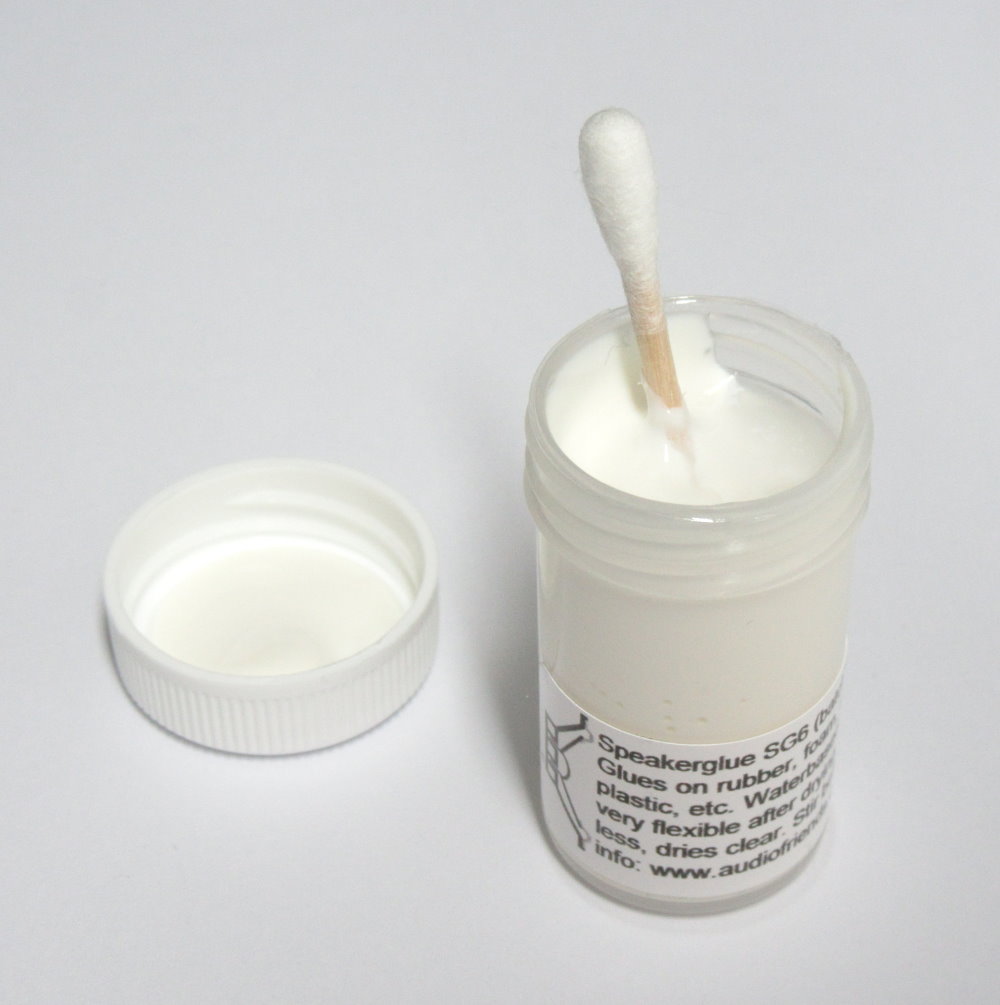
Mix the drop of water with the glue.
If you want to mix more water through the glue, this is entirely at your own risk. Please note that if the adhesive is thinned too much, the adhesive will lose its adhesive strength.
Even if you have to mount a foam surround, the glue can become so thin that the glue penetrates the foam. All of the above at your own risk.
Brush >
Please see: www.refoam.info/brush.jpg
Fluid / Remover >
We use for removing the old foam methylated spirits or alcohol. You may use often on the frame some stronger remover at own risk. If the old glue is enough flat and strong ist's possible to glue on this old glue at own risk.
See for more information: www.repairyourspeakers.com/en/repair-videos/c-1.
All rights reserved
Copyright 2013 - 2026 Fred Buist - Audiofriends


 Nederlands
Nederlands
 Deutsch
Deutsch
